

 Diamond Creek Vineyards is one of Napa’s most venerable and historic wineries having been founded in 1968 by Al and Adele “Boots” Brounstein (Al died in 2006 and Boots in 2019). Their first commercial vintage was from 1972, although they did make a little wine at what was the nearby Cuvaison Winery at the time from the 1971 harvest. This is California’s first winery estate dedicated to bottling a single variety (Cabernet Sauvignon), and arguably they helped set the stage for what would eventually be numerous Napa Valley based wineries focusing on small lot limited production vineyard designate wines.
Diamond Creek Vineyards is one of Napa’s most venerable and historic wineries having been founded in 1968 by Al and Adele “Boots” Brounstein (Al died in 2006 and Boots in 2019). Their first commercial vintage was from 1972, although they did make a little wine at what was the nearby Cuvaison Winery at the time from the 1971 harvest. This is California’s first winery estate dedicated to bottling a single variety (Cabernet Sauvignon), and arguably they helped set the stage for what would eventually be numerous Napa Valley based wineries focusing on small lot limited production vineyard designate wines.
Al was born in a tiny town (Runnymeade) in Saskatchewan, Canada in 1920 and grew up in Minnesota. Runnymeade is still small – its latest census shows only 15 people. After college, work took him to Los Angeles. At age 30, Al started a proprietary drug business called Standard Brand Company in Los Angeles and built this into a very successful business. He appreciated art (took classes at the University of Sorbonne in France), was a private pilot, spoke a number of languages and enjoyed cooking. His interest in wine, however, came later. In 1960 he wanted to take a class at UCLA in French literature, but the only class offered was titled, French Wine Appreciation. During the class they sampled high end French wine at $20/bottle and Al soon realized it was time to reassess his ideas about wine.
Al’s friends owned Ridge Vineyard located the Santa Cruz mountains above Cupertino; Al spent a few years working harvest to get some hands-on experience in the wine industry. During the 1960s much of Napa Valley was still dedicated to cattle and or planted to walnut and other fruit crops. Those getting into wine were not quite yet “heading for the hills”.
Diamond Mountain at this time was virgin ground for vineyards and what is now Diamond Creek was part of a much larger ranch. Al heard that a number of acres were for sale. Worried that the property would be too cold for growing Cabernet Sauvignon, Al wanted some “experts” to walk the property with him. He brought along some friends including Louis Martini and famed viticulture expert André Tchelistcheff. Their advice was to plant Cabernet Sauvignon; it is interesting to note that at this time there were less than 1,000 acres of Cabernet Sauvignon in the entire state of California.
Like a number of other vintners in Napa Valley, Al’s foray into the wine industry came later in life. He was 47 when he purchased the 70-acre property in 1967 for a little over $100,000; prices in contemporary Napa Valley are now three and four times++ that price for a single acre of a commercially producing vineyard land. In 1970 he purchased another adjoining 5 acres. At this time, the property was planted to some old prune trees and was covered various native vegetation including plenty of manzanita bushes and other trees. Al quickly planted parts of the property in 1968. Despite what the “experts” said about which root stocks to use, Al chose to plant all his vines on St. George root stock for several reasons. This was because he wanted to honor heritage, it is a root stock known for its proven and reliable history, especially in the mountains, its drought resistant qualities, and at the time there was a long waiting list to get AXR because demand for it was so high.

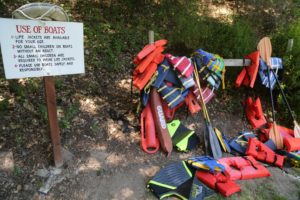
 This ultimately was a wise decision as their vineyards were never replanted due to phyloxxera, unlike numerous other vineyards in the region planted on AXR root stock. Over the years parts of their vineyards have expanded and replants have been made. Slightly less than 2 acres of the original Cabernet Sauvignon vines are still producing grapes. As a result, these are some of the older Cabernet Sauvignon vines in Napa Valley; the dramatic size of the trunks prove it.
This ultimately was a wise decision as their vineyards were never replanted due to phyloxxera, unlike numerous other vineyards in the region planted on AXR root stock. Over the years parts of their vineyards have expanded and replants have been made. Slightly less than 2 acres of the original Cabernet Sauvignon vines are still producing grapes. As a result, these are some of the older Cabernet Sauvignon vines in Napa Valley; the dramatic size of the trunks prove it.
Al was not happy with the clones being used in California in the 1960s; he went to Bordeaux and tried to get appointments with some of the First Growth wineries. He was denied at each attempt – fortunately he spoke fluent French and ended up talking to the workers in the fields at some of these prominent wineries. Management finally heard of his interest of starting a Cabernet Sauvignon vineyard in California and granted him several appointments. Al asked for some cuttings and was surprised when two of the First Growth wineries consented; perhaps they didn’t take him seriously at the time.
Al was not able to ship the vines directly to the USA because any organic material needs to be quarantined for a certain amount of time and Al wanted to get these cuttings grafted at his earliest convenience. Rather, he shipped them to Rosarita Beach in Baja California, close to the U.S. border. Al flew his plane down there and picked up the cuttings and brought them back to Napa Valley, flying into the tiny Calistoga airstrip several times over a span of about a year and a half. He was probably one of first to define the term, “suitcase” cuttings. And vineyard manager and vintner, Dick Steltzner who has certainly left his mark on this valley, helped plant the original vineyards here.
Al chose the name Diamond Creek in homage to the pieces of quartz and quartz crystals he initially found glittering in the water of the stream that flows through the property.
Vineyards
Miscellaneous Property
The vineyard sites are unique; other than visually being one of the most impressive vineyard estates in Napa Valley, three distinctive soils are found here, historically producing three separate bottlings each year. Five acres of vineyards named Gravelly Meadow grow in alluvial shallow soils; workers have even found marine related fossils in the soil here. Volcanic Hill’s 8 acres contain light dusty ash-based soil deposited from ancient volcanic activities. And Red Rock Terrace is 7 acres of iron rich red rocky soils located on a steep hillside composed of primarily andesite but also some basalt.
The vineyards range in elevation from 400 to 800 feet. An extremely important factor are temperature fluctuations between each vineyard site; parts of Volcanic Hill (south facing) and Red Rock Terrace tend to be among the warmest sites on the property. Like Gravelly Meadow the other coolest temperature vineyard is the tiny less than an acre Lake Vineyard which was originally planted in 1972 and produced its first bottled vintage in 1978. In addition to shade from the nearby forest and cooling air, its temperature is perhaps also somewhat moderated by its proximity to the lake. Wine from this vineyard is not produced every year and is only crafted on its own during exceptional years when the fruit reaches full maturity. Based on a 50 year track record, wines from Lake have been produced and bottled less than 50% of the vintages. During other years, grapes from the Lake Vineyard have been blended into the Gravelly Meadow bottling.
And a fifth vineyard block, a single acre on the hill above Lake Vineyard was planted to Petit Verdot in 1997 but these vines have since been pulled out and replanted to Cabernet Sauvignon (using selections from the property). Like Volcanic Hill, this tiny hillside block also grows on volcanic ash soils. As of 2024, this tiny block is still unnamed. And another very important influencing characteristic of this property is the amount of sunshine hours each vineyard experiences based on both aspect and also the shading from the nearby forest.
With these three unique soils, initially Al reflected on what the French would do: blend or make separate wines. One has to realize the perspective of those years was a lot different than today where wineries promote terroir differences with single vineyard designated wines. Al was way ahead of his time. Wanting to discover if these soils actually resulted in differences in the wines, he barrel aged them separately from one another. Noticing the unique attributes between each vineyard he bottled each one as its own wine.
From 1972 until 1980 the Diamond Creek Vineyards wine was fermented in redwood tanks located on one of the lowest parts of the property surrounded by vineyards. There was no winery then; while the tanks were covered with a roof, there were no walls. The current winery was completed in time for the 1981 harvest, the redwood tanks were moved in and were used until 1998 when they were replaced by stainless steel temperature controlled tanks.

 Remarkably these old tanks still exist and are stored on one side of the property. They were manufactured by A Bellagio Wood Tank Co based at the time in Healdsburg in neighboring Sonoma County. The roots of this cooper date back to the early 1930s when it was operated by Lidio and Alfred Bellagio. The autumn edition dated 2009 of the Russian River Recorder describes their barrels as becoming, “highly sought after in the post Prohibition wine industry because of their exacting standards, well crafted products, and low prices.” A Bellagio Wood Tank Co sold their products to a number of wineries in both Sonoma and Napa Counties including Beringer, Christian Brothers and what was the Napa Co-op (now the site of HALL St. Helena). The business eventually transitioned into making wooden water tanks and later permanently closed.
Remarkably these old tanks still exist and are stored on one side of the property. They were manufactured by A Bellagio Wood Tank Co based at the time in Healdsburg in neighboring Sonoma County. The roots of this cooper date back to the early 1930s when it was operated by Lidio and Alfred Bellagio. The autumn edition dated 2009 of the Russian River Recorder describes their barrels as becoming, “highly sought after in the post Prohibition wine industry because of their exacting standards, well crafted products, and low prices.” A Bellagio Wood Tank Co sold their products to a number of wineries in both Sonoma and Napa Counties including Beringer, Christian Brothers and what was the Napa Co-op (now the site of HALL St. Helena). The business eventually transitioned into making wooden water tanks and later permanently closed.
In the 1960s and 1970s much of California’s wine was sold in retail shops rather than restaurants which often carried French wines. When Al went to retail shops to try and sell his wine – a single vineyard wine from California in the 1960s and 1970s as expected was a hard sell. One prominent wine shop owner told him his wines would sell better if he blended all three vineyards together. Al’s response was something like, “when three of the best Burgundian wineries start blending their flagship single vineyard wines together, than I will consider it!”
A unique part of the property is on Diamond Creek below the winery where all three vineyards and soil profiles converge within merely 60 feet of each other.
In 1970 Al put in a beautiful lake centered on Diamond Creek; he cleared the land himself which included burning back the underbrush. Unfortunately, his “managed” fire got out of control but eventually was contained. Old timers in the valley still remember this fire and how much worse it could have been.
Many Napa Valley wineries seem to change winemakers every few years but not so with Diamond Creek. Since 1968 they have had only several winemakers. Jerry Luper assisted Al through the mid 1990s. Phil Steinschriber was hired in 1991 and Graham Wehmeir took over winemaking in 2020 following the transition in ownership to Louis Roederer.
Harvest can run up to 6 weeks on the property; respecting the properties’ individual microclimates rather than picking each block at once, the grapes are selectively picked as they ripen. This can often mean up to 20 different “mini” harvests each year. And it also means their harvest crew can be very small since the micro picks are spread out over such a long time. Regardless of vintage, the first grapes to go through veraison are located on the top of Volcanic HIll followed by Red Rock Terrace and then finish at Gravelly Meadow. Their overall production is low; they cut off all but the healthiest of the grapes each year, leaving between 1.5 and 2 tons per acre. And the grapes are picked for ripeness, not opulence and are typically harvested between 22 and 24 brix.
Diamond Creek’s wines have always been focused on quality and are about showcasing the individual terroir on the estate. Their earliest releases were priced under $10/bottle which was considered very expensive at the time. One of their earlier releases retailed for $100/bottle which at the time was the most expensive 750ml current release in California. Their wine set the bar high in first annual Napa Valley Wine Auction in 1981 when a case of the 1978 Lake Cabernet Sauvignon sold for $5400. Many years later at the same annual auction, the winning bit on a lot of Diamond Creek Cabernet Sauvignon was over $120,000.
As expected, due to the individual microclimates and soil types each of the wines show distinctive differences including texture. However, all of their wines feature excellent acidity. These wines can easily age for several decades, and they have the earlier vintages to prove this. We have had several vintages and each wine tastes exceptional at a young age – but has the acidity, fruit and backbone to age for many years.
Select Wines
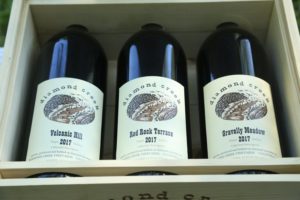

 Gravelly Meadow
Gravelly Meadow
Gravelly Meadow is among the coolest of their vineyards due to its low elevation on the property. During the growing season, cool air blows from the west and sinks down to this site while warmer air remains at a higher elevation. And even in the middle of the day, this site remains cool. In addition, its exposure to sunlight is limited in both the morning and the evenings due to the influence of the nearby trees from the encroaching forest. There is often a significant temperature difference here in comparison to the hottest part of the property, Red Rock Terrace. And as a result of this cool site, the wines from Gravelly Meadow tend to showcase a higher aromatic intensity than wines from other parts of the property and feature bright acidity. Gravelly Meadow is dry farmed. The first wine bottled from Gravelly Meadow was in 1973.
The 2017 Diamond Creek Gravelly Meadow is deep ruby; the bouquet offers aromas of sweaty baseball mitt leather being used on a hot day, old library book, a savory and a gamey character and a dark spice nuance which continues to persist. As the wine evolves in the glass, eventually a note of old cedar box is revealed. The palate offers flavors of dark raspberry, dark plum and cherry. Plush is the first word we wrote to describe its textural feel. Some of the savory characters on the bouquet are clearly evident on the palate. The tannins are lightly textured, seamlessly fit into the finish like puzzle pieces and linger with a subtle dusty nuance accompanied by a hint of dried tobacco leaf.
The 2012 Diamond Creek Vineyards Gravelly Meadow (their lowest yielding vineyard) shows lively and fresh fruit aromas including black fig, a dried rose petal component and an earthy note. It is dark in the glass. The palate is rounded, full-bodied, and features bright acidity to complement the depth of flavor. The finish is long lasting with rounded but also well-defined tannins. Of their three main vineyard bottlings, this one, regardless of vintage tends to be the softest and most approachable bottling.
Red Rock Terrace
As of 2024 a nearly 2 acre block of Red Rock Terrace (located below the winery) is still growing, planted from the original Cabernet Sauvignon in 1968. These are the only remaining vines from the original planting. For more than 3 decades they grew without any trellising. Wines from this section of the property tend to be red-fruited. And like Gravelly Meadow, this vineyard is dry farmed.
The 2017 Diamond Creek Red Rock Terrace is deep ruby; the bouquet offers a sweetness of both fruit and spice. These include dried rose petals, 5-star Chinese spices, plum, dark cherry, blackberry, mulberry and dark licorice. The aromas are both red and sweetly fruited. The palate sports flavors of red cherry, raspberry, and red plum. Shows notes of a light tobacco spice and dried herbs on finish. The tannins are gravelly textured but still present a rounded feel. And a subtle dryness too. These characteristics ultimately outpace the fruit on the long finish. Mouth watering. Lively. Fresh. For reference we tasted this wine 7 years post vintage. It offers a plush textural feel like the Gravelly Meadow bottling but features a slightly greater level of textural intensity.
The 2004 Diamond Creek Red Rock Terrace; this wine shows some light brickish browning on the edges of the rim in the glass. For reference, we tasted this wine twenty years post vintage. It offers some bottle bouquet at this age, with aromas of dried berry fruits including raspberry and currant accompanied by library book, dust, suede leather, a sweet tobacco spice and dried herbs including dried sage. The tannins are lightly grainy, are broadly distributed across the palate but are highly integrated into the seamless finish. This wine is primarily red fruited including flavors of raspberry, red cherry, currant and dried cranberry. A subtle dusty character persists. An appropriate word to describe this wine’s overall cadence is balance. The finish is also red fruited with a lingering tartness. Still lively. This wine is showing very well at the two decade mark.
Volcanic Hill


 Wines from Volcanic Hill are consistently the most robust and tannic of the three bottlings. The soils here are dense and as a result the vines are shallow rooted. These vines are also watered.
Wines from Volcanic Hill are consistently the most robust and tannic of the three bottlings. The soils here are dense and as a result the vines are shallow rooted. These vines are also watered.
The 2019 Diamond Creek Volcanic Hill is deep ruby and nearly opaque; somewhat brooding, the bouquet takes time for its personality to open up. It offers scents of dark raspberry, blackberry, dried herbs including thyme, cocoa powder and a hint of chocolate. The palate features both freshness, liveliness and plenty of depth. Mouth watering, its flavors are generous showing both red and darker fruits, accompanied by dried herbs, dried tobacco leaf and a hint of cinnamon stick. The well-textured tannins are gravelly, dusty and persistent. While the most ‘robust’ of the three wines, this bottling still expresses the Diamond Creek signature balance. This wine has loads of life ahead of it, as in probably 2 decades before it starts peaking.
The 2012 Diamond Creek Vineyards Volcanic Hill shows a perceptible sweet note to the bouquet with nuances of baking spices and floral notes. On the palate it is gentle, soft and subtle showing black fruit, balanced between fruit acidity and structure. Still, this vintage and vineyard shows a graciousness that is highly appealing. The firm tannins are well integrated, perhaps softened by the few years in the bottle prior to our tasting.
Diamond Creek produces about 500 cases from each of their three vineyards for a total of about 1500 cases annually.
Other estate wines
While tasting through all the vineyard blocks, Graham Wehmeir noticed grapes growing in specific sections were producing more tannic berries than others. He harvested and fermented these grapes separately; in 2019 he produced a wine called the Three Vineyard Blend. A blend from the three vineyards had also been produced in a couple of year prior, but back then, featured only second crop grapes. Starting in 2021, a small amount of the Three Vineyard Blend will be produced each year.
The 2019 Diamond Creek Three Vineyard Blend is composed of 40% Red Rock Terrace, 40% Volcanic Hill and 20% Gravelly Meadow grapes. This wine is deep ruby and opaque; the bouquet is elegant with aromas of dark raspberry, cherry, blackberry, and darker spices. Dark fruited, this wine is ripe but not over ripe which is an important distinction. It teases savory with a light nuance of dark pepper. Layered, juicy, and intensely flavored. This is the most showy wine when compared to their three primary wines, especially on the palate. It has some muscle in terms of both texture and flavor intensity. The tannins are grainy and gravelly and parallel the fruit for some time on the extended finish. The finish is dark, with spice notes including crushed pepper and dried herbs. This bottling features bright acidity with a simultaneous richness, characteristics of well-made Napa Valley Cabernet Sauvignon. Unlike the three primary bottlings which typically see around 21 months of élevage, this wine was aged for 30 months in barrel, in part to soften the grape tannins.
Diamond Creek Vineyards has produced a special very limited production bottling seven times in their history as of our latest update to this review. This wine is called MicroCLIMATE and is made when a singular expression stands out for a particular reason, regardless of which part of the vineyard it is from. Six vintages were produced prior to Al’s passing. The most recent bottling was Microclimate 3 from the uppermost parts of Volcanic Hill in 2020; due to the Glass Fire that year and its resulting smoke, this was their only wine bottled in 2020.
Summer Open House (no longer offered)
Every summer for decades, the property opened several weekends in the summer to those on their mailing list; there was absolutely *nothing else like this in Napa Valley*. This was a unique and rare opportunity to not only enjoy the beautiful grounds and vineyards but also to taste barrel samples of their three vineyards and purchase coveted older releases; during our visits over the years, we noticed wines up to 18 years old were available for sale. Some families came to these “picnics” for several decades and had their own special spots on the grounds staked out.
 Guests had access to most of the property; this special slice of Napa Valley is truly magical featuring hillside vineyards combined with plenty of water features including man-made creeks, waterfalls, little pathways, swimming holes and an idyllic pond. Boots’s son Phil Ross used to always lead a one hour guided very informative tour of the property in the afternoon and the day always culminated with a rare tasting of three of their current release wines. These tastings always were held on the west side of their lake with attendees gathering in the open area next to Lake Vineyard.
Guests had access to most of the property; this special slice of Napa Valley is truly magical featuring hillside vineyards combined with plenty of water features including man-made creeks, waterfalls, little pathways, swimming holes and an idyllic pond. Boots’s son Phil Ross used to always lead a one hour guided very informative tour of the property in the afternoon and the day always culminated with a rare tasting of three of their current release wines. These tastings always were held on the west side of their lake with attendees gathering in the open area next to Lake Vineyard.
An old article from one of the local newspapers dated October 20, 1977, described these early gatherings. “His sales methods are unusual, consisting of inviting customers to the place for picnicking, swimming, boating and tasting. He provides personal tours of the vineyards and explains the distinctive properties”.
As of our latest update to this review, Diamond Creek Vineyards no longer offers these summer open house experiences and parts of the water features have been removed or will be removed soon.
—
Because of demand and limited production, the Diamond Creek Vineyard wines are very selectively distributed. Visits are for collectors and extremely serious wine enthusiasts; a smell section of cheese, nuts and tasty crackers are paired with several of their current release vintages. Tastings are hosted upstairs above the physical winery, and weather permitting, visits will include a drive around parts of the property. For more information, to schedule a tasting or to join their mailing list, visit: www.diamondcreekvineyards.com
Winery/Hospitality
Champagne Louis Roederer
In March 2020, Diamond Creek Vineyards sold to Louis Roederer (Rouzaud family); both families had known each other for many years prior to this sale. Jean-Claude Rouzaud, who was president of Champagne Louis Roederer for more than 30 years, hosted a special two-day wine tasting event with the first night’s dinner and tasting at the historic La Tour d’Argent along the banks of the Seine River and almost across from Notre-Dame in Paris in 1997 celebrating 30 of the world’s greatest wines. And it also celebrated his 30 years at the helm of Roederer.
Day one featured 10 of the best Bordeaux wines and day two featured the other 20 wines. Several wines from Napa Valley were in his list including the 1991 Diamond Creek Vineyards Volcanic Hill and a bottling from Stag’s Leap Wine Cellars. Jean-Claude sent personal invitation letters to all the proprietors of what he deemed the 30 best wines including to Al and Boots. The letter to the Brounstein’s was dated May 23, 1997 and referenced several Bordeaux First Growths as having already agreed to attend the event. Needless to say, Al and Boots attended.
La Rôtisserie d’Argent, sister restaurant of La Tour d’Argent
A short version history of the company is worth mentioning. A Champagne based company called Dubois Père et Fils was acquired by a Nicolas-Henri Schreider. He hired his nephew Louis Roederer in 1827, and the company changed its name in 1833 to Louis Roederer after his uncle Schreider passed away. Remarkably, the company is still 100% family owned, all these years later (extremely rare among the large Champagne houses).
Louis Roederer owns a number of wineries in Europe including Louis Roederer in Champagne, Ramos Pinto, Champagne Deutz, Delas Frères, Château de Pez, Domaines Ott and Château Pichon Longueville Comtesse de Lalande, among others. At last, count their European portfolio contains more than 10 winery/vineyard properties.
Their most well-known product is Cristal, having been produced since 1876 initially at the request of Tsar Alexander II of Russia.
The company also owns Maisons Marques & Domaines USA, Inc., founded in 1987 to promote, distribute and market wines from Champagne Louis Roederer and Roederer Estate. Over the years this company has grown and now represents and distributes wines from other Roderer owned wineries as well as wines from select nonfamily owned wineries.
In California, including Diamond Creek Vineyards, Louis Roederer owns five physical wineries: Merry Edwards in Sonoma County and in Anderson Valley, Mendocino County – Domaine Anderson, Roederer Estate and Scharffenberger Cellars. All three Anderson Valley wineries are located within very short drives of each other and all are normally open by walk-in (no reservations needed). And also under their ownership, the artisan-crafted négociant label, Carpe Diem uses fruit from both Napa Valley and Anderson Valley.
Louis Roederer Headquarters, Reims France
The headquarters are located in the center of Reims which is about a 90-to-120-minute drive from either central Paris or Charles De Gaulle Airport (CDG). This is ‘ground zero’ for some of the world’s greatest Champagne houses; walking through this section of town is a who’s who of Champagne with nearby neighbors including Krug, G.H. Mumm and Champagne Palmer among others.
The Louis Roederer headquarters building was constructed between 1852-1854 with design plans created by architect Édouard Thiérot. The complex resembles a palace with four main buildings surrounding an inner courtyard (seen only from the ‘back’/staff entrance).
And special mention should be given regarding the Louis Roederer International Wine Writers’ Awards. Created in 2004 these awards honor top wine journalists, authors, bloggers, artists and photographers. Wine communicators are encouraged to submit selected works free of charge to be judged by accomplished individuals who work in the wine industry. The awards are given once a year and attract entries from around the globe ranging from those who have made wine communication a profession to those just beginning their wine journey.
—
Domaine Anderson, Philo
 The short driveway to Domaine Anderson is located directly across Highway 128 from Goldeneye Vineyards (another Napa Valley connected property – the Duckhorn Group). What is now the property for Domaine Anderson has changed ownership several times in the past 20+ years – the previous owner built and named the winery after himself, Jim Ball Vineyards at the Four Dog Ranch Vineyard. And then Louis Roederer acquired the surrounding land and winery in 2011.
The short driveway to Domaine Anderson is located directly across Highway 128 from Goldeneye Vineyards (another Napa Valley connected property – the Duckhorn Group). What is now the property for Domaine Anderson has changed ownership several times in the past 20+ years – the previous owner built and named the winery after himself, Jim Ball Vineyards at the Four Dog Ranch Vineyard. And then Louis Roederer acquired the surrounding land and winery in 2011.
The property is about 40 acres of which approximately 14 acres are planted to Pinot Noir and 2 acres to Chardonnay. What is now called the Dach Vineyard surrounds much of the winery ascending onto the gently sloping hills to the immediate east of the winery. In the ensuing years after their purchase, their in-house vineyard management team began farming the property organically and eventually biodynamically. The Dach Vineyard is now certified both organic and biodynamic (only the 2nd vineyard in the Anderson Valley to be certified biodynamic).
Domain Anderson focuses on premium and thoughtfully made Chardonnay and Pinot Noir. They produce several food friendly Chardonnays including their Estate bottling and a Dach Vineyard designate.
Every one of their Pinot Noir estate wines are produced in extremely tiny quantities, usually 50 to 100 cases per wine. And all are unique and elegant with their own characteristics.
The 2017 Domaine Anderson Walraven Vineyard (from a vineyard south of the winery near Highway 128) is from a hillside block planted to Pinot Noir clones 114 and 667 – the site is chalky and dusty with an abundance of Pennyroyal growing (flowering plants in the mint family). The wine shows a very elegant bouquet – immediately opening to and dominated by aromatically appealing bright fruits including red cherry and raspberry. The aromatics are diverse and change over time and as the wine opens shows notes of menthol and an herbal nuance. It is intriguing to see how the wine has perhaps captured some of the more subtle characteristics of the Pennyroyal. Very balanced across the palate while straddling a nice line between richness and lightness of texture and flavor. Offers flavors of pomegranate and cherry and hints of white pepper on the finish. A beautiful showing.
The 2017 Domaine Anderson Pinoli Vineyard is from a site located in what is referred to as the ‘deep end’ of the Anderson Valley – to the north, closer to the ocean and closer to where redwoods begin dominating the landscape. In contrast to their other 2017 Pinot Noir wines, the bouquet on this wine is decidedly savory with notes of forest floor, truffle oil, dried herbs and old cedar chest. As the wine breathes further, reveals notes of brown chocolate. Seamless on the palate with flavors of red cherry and tart blackberry. Very long finish with excellent acidity. Should be a fun wine to watch over the next few years.
Visits are casual with tastings either inside their contemporary tasting room or weather permitting, outside on the patio. Serious Napa Valley wine enthusiasts perhaps might recognize the design and darker look of the winery and hospitality buildings. These buildings were designed by well-known architect, Howard Backen (died 2024), most noted for his Napa Valley winery designs including Harlan Estate, The Napa Valley Reserve and Dana Estate, among many others.
Merry Edwards, Sebastopol
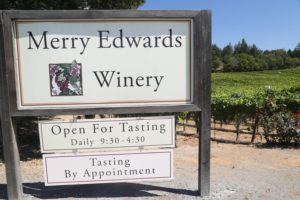 The winery takes its name from its founder, Meredith Edwards. Known for their excellent Pinot Noir with a focus on grapes from the Russian River, the first vintage produced from Merry Edwards was in 1997. Over the years Merry Edwards has acquired vineyard property and also works with select growers, typically in long term leases. Coopersmith Vineyard is home to the winery (formerly an apple orchard) – built in 2007 and opened to visitors in 2008.
The winery takes its name from its founder, Meredith Edwards. Known for their excellent Pinot Noir with a focus on grapes from the Russian River, the first vintage produced from Merry Edwards was in 1997. Over the years Merry Edwards has acquired vineyard property and also works with select growers, typically in long term leases. Coopersmith Vineyard is home to the winery (formerly an apple orchard) – built in 2007 and opened to visitors in 2008.
Merry has spent decades in the wine industry; she graduated from UC Davis in 1973 with a master’s degree in food science (concentrating on Enology). In 1974 she became winemaker at Mount Eden Vineyards and by 1977 began what would be a long and accomplished career in Sonoma County. She was founding winemaker at Matanzas Creek Winery in 1977 – by the mid 1980s was consulting and began a small winery called Merry Vintners (on site of what is present day Benovia Winery). In 2013 Merry was inducted into the Culinary Institute of America’s Vintners Hall of Fame.
In 2015 winemaker Heidi von der Mehden joined the team and became head winemaker in 2018 (to date, the only other winemaker besides Merry). She continues to produce balanced wines and emulate the style that Merry established while continuing to work very closely with their vineyards. Incidentally we grew up in the same neighborhood, several homes down from the von der Mehden family.
The 2017 Merry Edwards Olivet Lane Chardonnay was barrel fermented and stirred on the lees twice a week. Golden in the glass, the bouquet shows some pretty aromas including influence from the oak, not overt but more subtle. Dessert spices, hints of lemongrass, peach, citrus blossom and yellow pineapple. Went through 100% malolactic fermentation. Rounded across the palate but with an absence of the buttery flavors often found in Chardonnays that go through full secondary fermentation. The winemaking team uses a yeast which doesn’t generate as much diacetyl, the organic compound that imparts buttery aromas and flavor. Drinks very nicely by itself – a very balanced showing.
The 2017 Merry Edwards Flax Vineyard Pinot Noir (Pommard clone) offers a brightness on the bouquet including red cherry, licorice and floral note. Also, a sweeter note including baking spices and as the wine opens, hints of mocha. This wine has depth and character on the palate showing flavors of currant and cranberry – a flavorful union that results in a higher-toned tartness, especially on the finish. At the time of our tasting (3 years post vintage date), the tannins show youthful with a surprising grip that persists for quite some time. Also, darker spices including peppercorn. This is the most robust of the Pinot Noirs we tried during our tasting.
The 2018 Merry Edwards Sauvignon Blanc is a blend of both Sauvignon Blanc and 42% Sauvignon Musqué. It was aged in French oak barrels, 18% new oak and lees stirring was done 2/week for 6 months. This is the antithesis of a leaner greener Sauvignon Blanc. This wine opens with pretty aromatics which are both floral and fruit driven. Shows an initial sweetness of honeysuckle, yellow pineapple and as it opens aromas of jasmine and citrus blossom. On the palate a subtle hint of sweetness with flavors of passion fruit, apricot and mandarin. The density and mouth feel are noteworthy – creamy, the wine glides smoothly across the palate. Lingers with a nice ‘ripe brightness’ if you will, a combination of both fruit and acid. Drinks very well by itself.
With no traffic, the winery is located less than a 15-minute drive downtown Santa Rosa or about 5 minutes from the center of Sebastopol. Visits are relaxing and informative with a focus on tasting several Pinot Noir wines; normally walk-ins are ok. Total production each year runs between 20,000 and 30,000 cases.
Roederer Estate, Philo
 Now the largest vineyard landholder in the Anderson Valley (Mendocino County), the Rouzaud family first purchased land here in 1981. Of their 5 California wineries, this is the only one they founded rather than purchasing existing wineries. Today they farm approximately 600 estate acres of vineyards in Anderson Valley – the majority of which is Roederer Estate. This property is planted primarily to Chardonnay and Pinot Noir and a small amount of Pinot Meunier.
Now the largest vineyard landholder in the Anderson Valley (Mendocino County), the Rouzaud family first purchased land here in 1981. Of their 5 California wineries, this is the only one they founded rather than purchasing existing wineries. Today they farm approximately 600 estate acres of vineyards in Anderson Valley – the majority of which is Roederer Estate. This property is planted primarily to Chardonnay and Pinot Noir and a small amount of Pinot Meunier.
And while by far the focus and passion of their production is on sparkling wines, Roederer Estate also produces a tiny selection of still wines including Chardonnay and Pinot Noir (typically only available for purchase or tasting at the winery or through their wine club membership).
The 2016 Roederer Estate Pinot Noir offers aromas of rose hips, dried rose petal, cranberry, currant and hints of old cedar box. It is very balanced across the palate with cardamom and white pepper along with red fruit flavors. Features bright acidity with very lightly toned tannins that linger softly. Also on the finish, notes of truffle oil and cranberry. We were told this wine is only about 13% alcohol. Drinking this wine on a hot day? Chill it slightly.
Visitors to the property drive past rows of vines on the way up to the winery which is perched on the edge of a hill. From the top, there are excellent views overlooking parts of the valley and vineyards below. Tastings are either indoors at tables or their wine bar or weather permitting, outside on the patio. A flight of their sparkling wines is served, typically beginning with their most produced wine – as of our latest update to this review, nearly 90,000 cases of Brut Multi-Vintage. Guests visiting the property may also purchase select wines imported from other Louis Roederer owned properties including from Europe.
Scharffenberger Cellars, Philo
 Founded by John Scharffenberger in the early 1980s (John would later go on to co-found SCHARFFEN BERGER Chocolate in San Francisco in 1997), the winery and property (120 acres of vineyards) was purchased by Louis Roederer in 2004. Located only about a minute drive north of Domain Anderson. The tasting room is intimate and cute and features rotating art from various artists. The focus of Scharffenberger Cellars is on sparkling wines with two primary offerings: Brut Excellence Non-Vintage and the Brut Rosé Excellence Non-Vintage along with several much more limited productions which are available at the tasting room. Tastings are either indoors or outside weather permitting, relaxing under the shade of nearby trees among their gardens.
Founded by John Scharffenberger in the early 1980s (John would later go on to co-found SCHARFFEN BERGER Chocolate in San Francisco in 1997), the winery and property (120 acres of vineyards) was purchased by Louis Roederer in 2004. Located only about a minute drive north of Domain Anderson. The tasting room is intimate and cute and features rotating art from various artists. The focus of Scharffenberger Cellars is on sparkling wines with two primary offerings: Brut Excellence Non-Vintage and the Brut Rosé Excellence Non-Vintage along with several much more limited productions which are available at the tasting room. Tastings are either indoors or outside weather permitting, relaxing under the shade of nearby trees among their gardens.
Prior to Louis Roederer acquiring Diamond Creek Vineyards – they already had an association with Napa Valley through their Cabernet Sauvignon produced and bottled at Dominus Winery under their negociant label, Carpe Diem (never to be confused with the wine bar/restaurant of the same name in downtown Napa). The Carpe Diem wines are sold through the Maisons Marques & Domaines website but can also be tasted at Scharffenberger Cellars upon request.
Carpe Diem produces three wines, a Chardonnay and a Pinot Noir from Anderson Valley and a Cabernet Sauvignon. Based on the vineyard sources, all three wines are priced very reasonably. The Cabernet Sauvignon is perhaps one of the best value wines coming from the Napa Valley based on the pedigree of the property and the winemaking team. In addition to this wine being produced at Dominus Winery, rumor has it that the grapes sourced are at least in part if not entirely are from the storied Napanook Vineyard in Yountville. The Carpe Diem wines are generally distributed to restaurants and larger stores nationally.







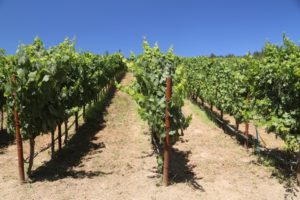









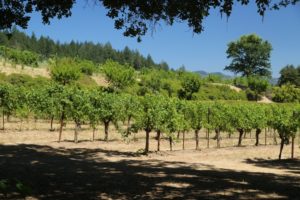



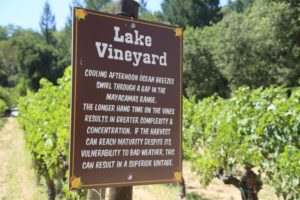

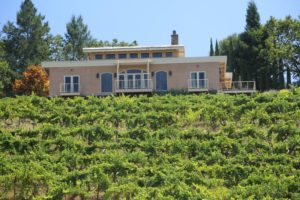

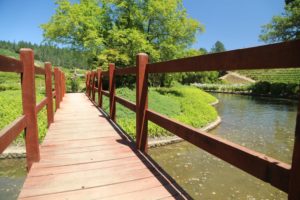





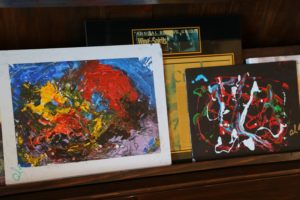

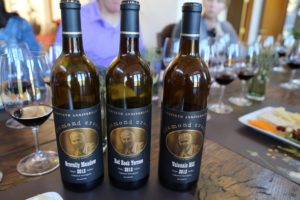

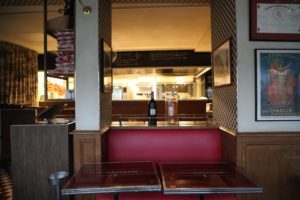



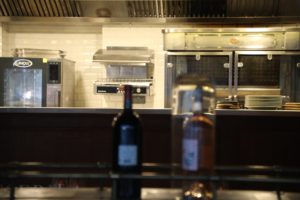











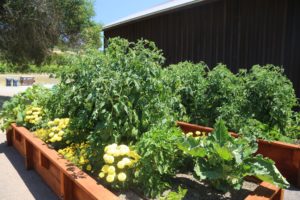



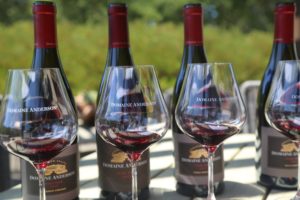




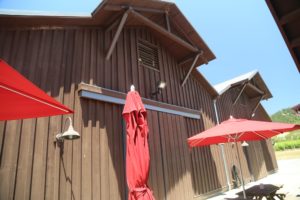




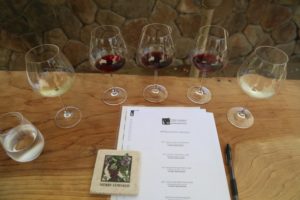



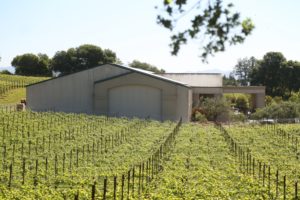


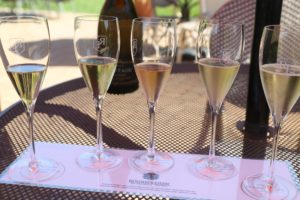



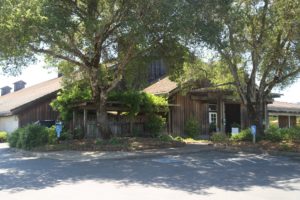

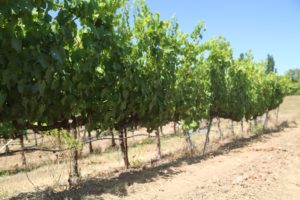





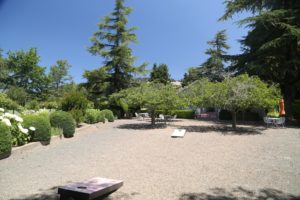




Really sorry to hear Boots passed on – we just talked to her in person a few days ago.